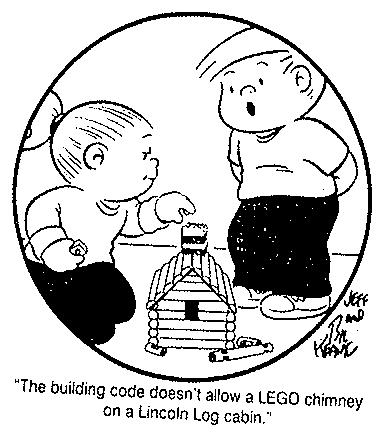I realized the other day when I speak about Tiny Houses I almost always get these questions and figured people coming to the site might find useful. So here we go:
1. What is a Tiny House?
A Tiny House doesn’t really have a definition, which is one of its strengths, it is a creative and flexible concept. The general gist is that we are looking to design and construct a dwelling for one or more people that is proportional to the number of people who live in it, but is smaller than the typical American Home. I generally classify a Tiny House as under 200 square feet and a small house 200-400 square feet for a single person.
2. Why the hell would you live in a Tiny House?
There a are a whole slew of reasons why we want to live in smaller spaces. Most people will point to three motivations: Environmental impact, financial reasons and life simplification. I am not going to argue about environmental issues, but the fact is we need to live smaller in all meanings of the word. We have to reduce our impact, our waste, our inputs, our outputs, our footprint and shift to a resilient and sustainable future and that isn’t a “sustainable” future like the commercial interests want to sell you. There are also many who look at the current true cost of homes today and question the wisdom in purchasing such a large investment that is seen as a debtors prison. Finally, living in a Tiny House allows you to bring focus and intentionality to your life, allowing you to focus on what is important in your life. When you aren’t tied to a home that you owe on, when you don’t have heaps of clutter you can focus on things like relationships, yourself, learning, etc.
 3. How much does a Tiny House cost?
3. How much does a Tiny House cost?
I have seen people who have went through great lengths to recover materials from dumps/Craig’s list/etc and already had the tools, they built it for under $3000. On the upper end, using top shelf materials and paying for someone to build it for you, $50,000. The average Tiny House person spends around $20,000 and does the work themselves.
4. Isn’t a Tiny House on a trailer really just a trailer home?
I would say no, but other disagree. Trailer homes often are much more expensive, the ones coming out of the factories have next to no appreciation for aesthetics, they often don’t focus on minimizing environmental impacts and often are made of low quality materials. There are a whole host of social consciousness issues surrounding Tiny Houses.
5. I have a family, you’re crazy to think that it is a practical option!
The Tiny Houses I typically talk about are around 150 square feet, but what people seemed to have selective hearing on is when I talk about the definition of a Tiny Houses is that a Tiny or Small House is respective to the number of occupants. A small house for a family of 5 might be 1000 square feet. I also write from the perspective of a single male who doesn’t wish to have kids, but would probably build a bigger house when I get married.
6. Aren’t they dangerous, what about tornadoes or hurricanes?
We work to make our houses to be as safe as possible, there are codes which promote safety, but sometimes codes lag behind and out of date. Building Tiny House can adhere to most of the same codes or even exceed them. Since many Tiny Houses are built on trailers, they have to be road worthy, which means it can tolerate stresses far beyond those of a traditional housing. For high winds, we use hurricane strapping which anchors the house to the ground more strongly than most houses are built today. The use of higher quality materials and better construction means you are better protected. Finally, in the event of serious danger, you are able to hitch your house to your car and drive out of harms way, which is pretty useful for flooding, just drive to the high point.
 7. Are they legal?
7. Are they legal?
In many cases they operate in gray areas. There are some municipalities that will work with you and I encourage you to do so, but sometimes they simply won’t. Having good relationships with your neighbors, large enough land to hide it, use loopholes, and flying under the radar is sufficient for most. Often it comes down to semantics: it is not a dwelling, it is a storage shed; it is a trailer, not a home.
8. Where do I put all of my stuff?
When you move to a smaller home you need to weed through your possessions, many of us find that there are many things that we haven’t used or needed in years! It really starts with an understanding of consumer culture, the problems it brings and the benefits you gain by at least partially removing yourself from it. We are always going to need things, we will always need to purchase things, but the differentiation between needs and wants is a difficult thing to start doing. We also need to be cognizant about how our culture influences us in this aspect, because it has a strong hold over many of us. I am still in this process of myself, getting rid of what is not truly needed and reducing my possessions to the basics. There are those who try to do the 100 thing or 300 thing challenge, I don’t necessarily do that, but I have been able to shift my mind set to really question my stuff and my purchases.
9. Do they have running water, flushing toilets and lights?
Yes and no. It depends on the house, there are many people who live in Tiny Houses who have all the creature comforts of modern society. At the same time, there are those who bring in their own water, use composting toilets, and capture their power from the sun. Many call this “off the grid”, my hope is to design my home to be able to tie into the grid fully, but can also operate off the grid.
10. Awesome! How do I start?
My post on Monday will outline how to get started moving towards living in a Tiny House!



I just learned that my city (Denver, Colorado) has revised its codes to permit (in some areas only, not sure which ones yet) homeowners to add small accessory dwellings in their back yards.
They are intended to be small homes, I believe, and may not exceed certain size/height requirements.
I find this a very, very positive step!
The trick with that is that often they require a house designated as a primary dwelling on the property, so make sure you explore that bit. Also semantics of what you call it will be important here.
Yes, it does require a primary dwelling occupied by the homeowner. Still, it’s a start and better than nothing!
And for what I would want (a small home for my recent high school grad) it would suffice.
2. Why the hell would you live in a Tiny House?
Why would someone live on a tiny house? Im only spending my time answering this to further/open individuals thought process to something they already accept–but cannot see the similarity to. Why would one live on a beautifully, architecturly intelligent 400 sq ft apt in NYC manhatten for 1000-4000 RENT a month? That is accepted, whether you would do it or not, it is “accepted and normal”. So why is the same size dwelling not accepted? In instance, you own the land, bought it and pay taxes every yr… but the same sq ft that was accepted in the previous example; is not legal, permitted, or allowed. OK, GOVERNMENT AND CODES ARE YEARS BEHIND… legality aside, how doesnt the person understand this? Tiny house people are questionable, 50k mtg. Nyc renters 2k monthly are unquestionable/totally normal. Think about it, and ask yourself if you are just to socially conditioned to “normal”
Why can’t you use aluminum studs etc…wouldn’t it be so much lighter and flexible for travel???
Sorry, I want replies and didn’t check those so will post my question again. Why can’t you use aluminum studs, etc…wouldn’t that be lighter, cheeper and more flexible then wood. not to mention fire considerations?
when you say that a tiny house can only be 13’6″ tall is that including the height of the trailer
Yes. Because that height will get you UNDER electrical lines that are strung across roads and under any type of bridge or overpass. So you measure from the ground to the top of your projected house. More than 13’6″ and you run the risk of shearing the top or roof of your house off when you transport it! LOL.